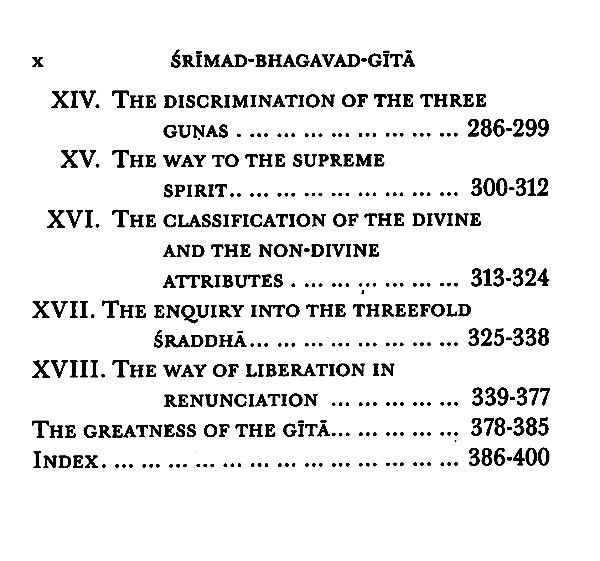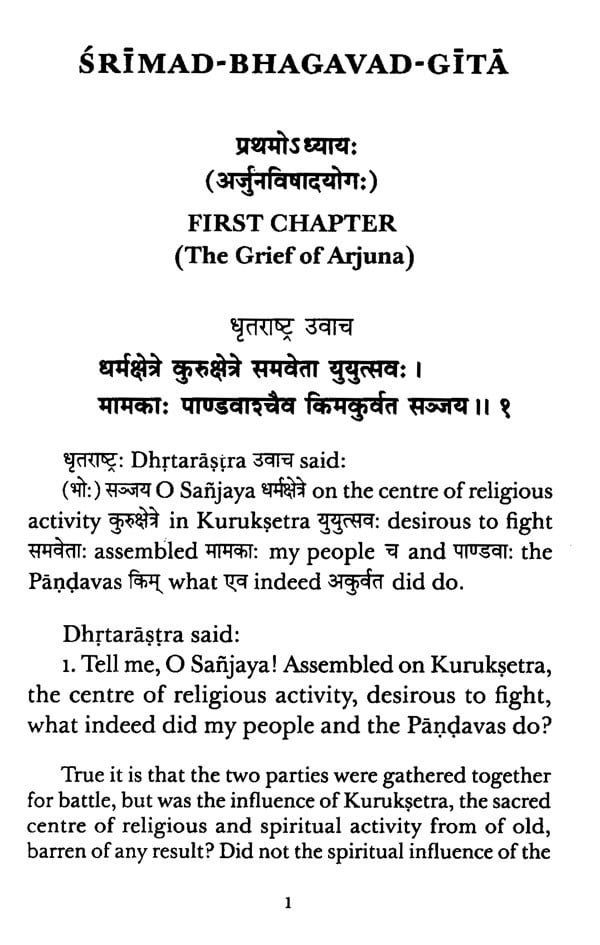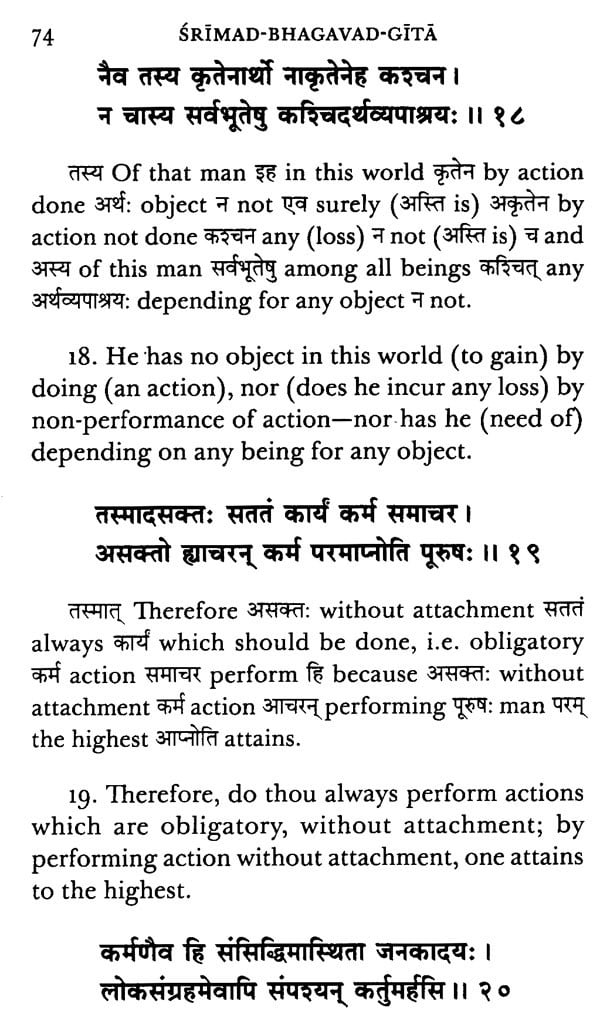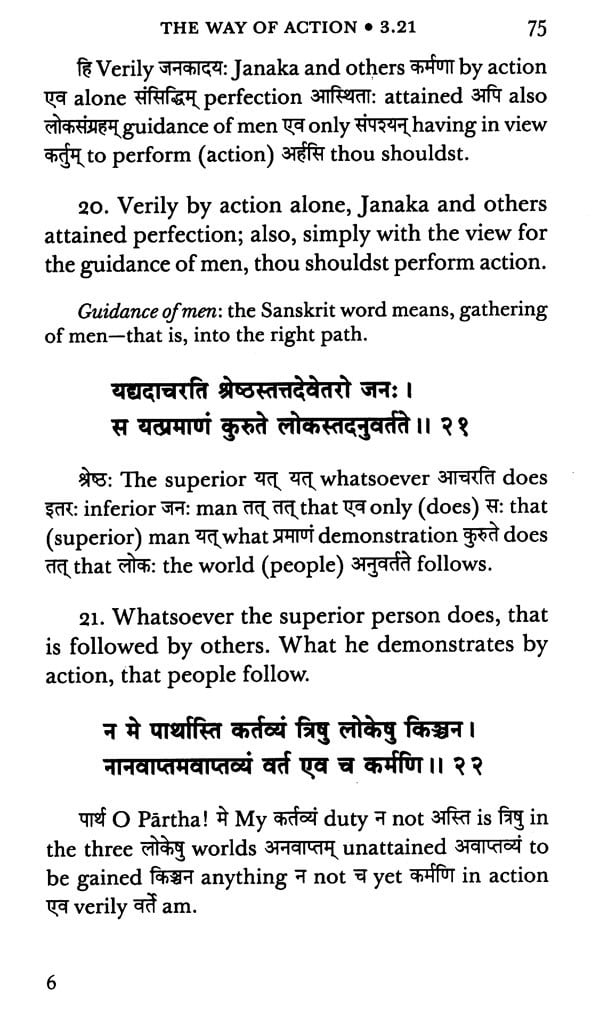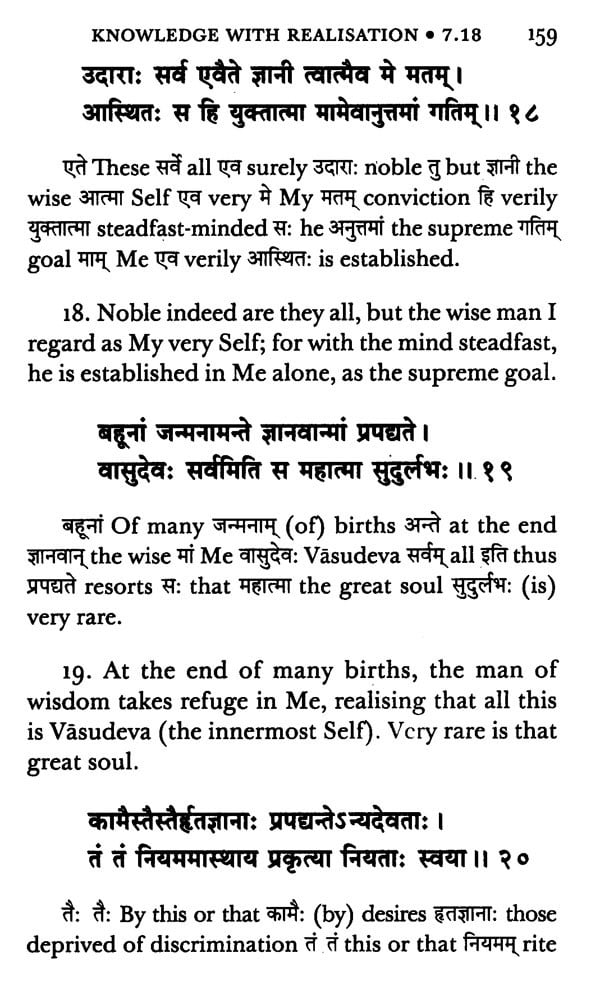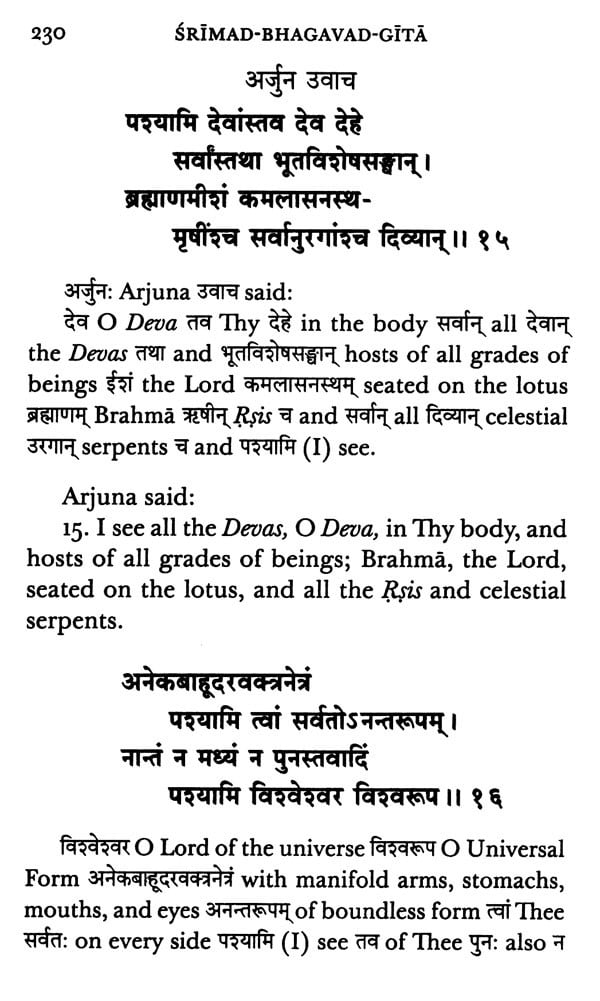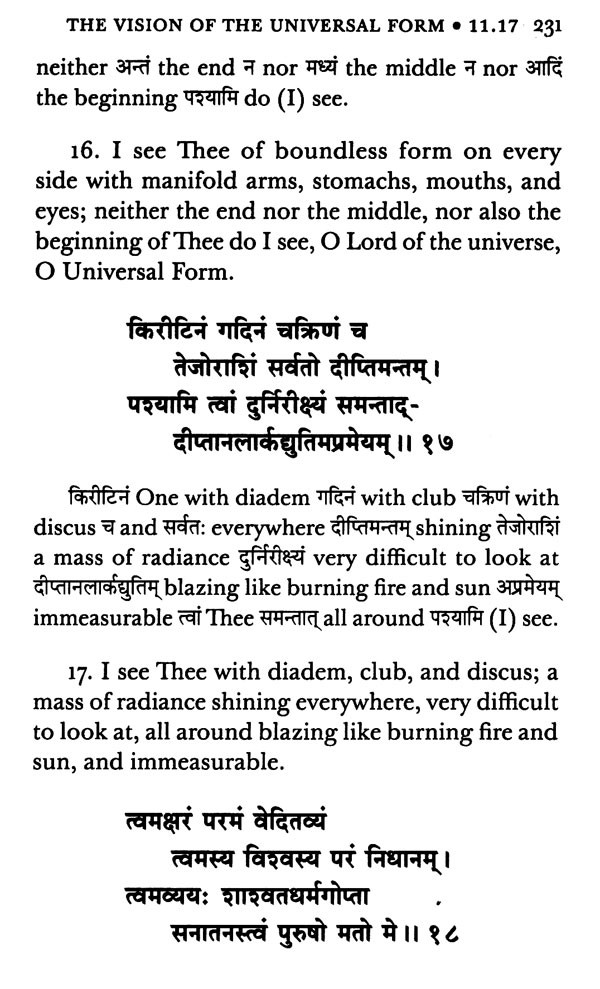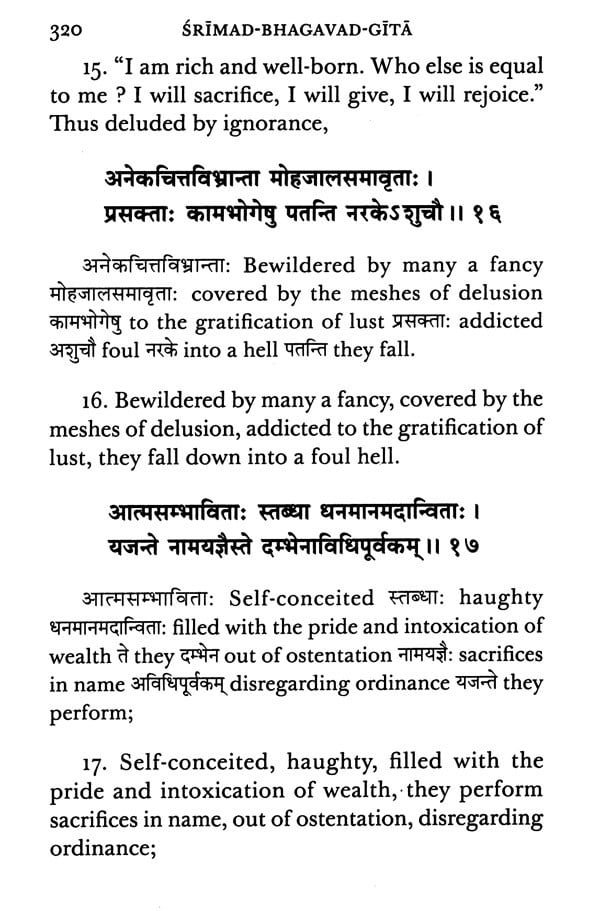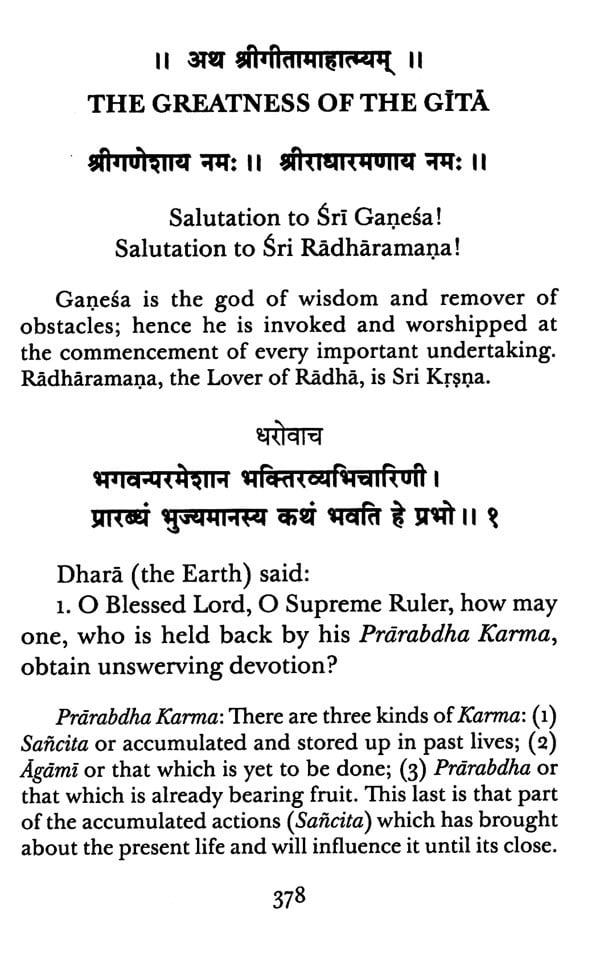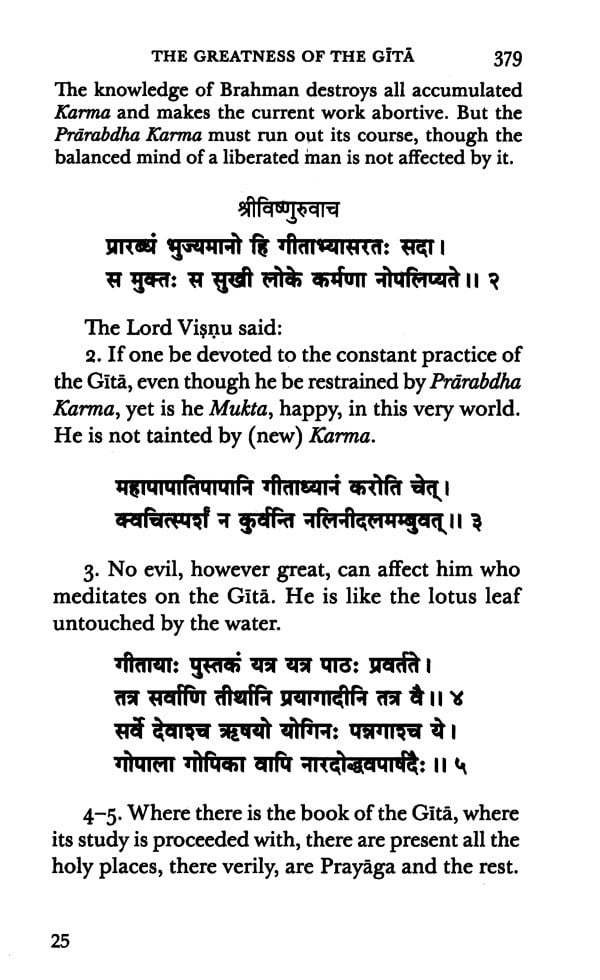
Srimad Bhagavad Gita
Book Specification
| Item Code: | AZB426 |
| Author: | Swami Swarupananda |
| Publisher: | ADVAITA ASHRAM KOLKATA |
| Language: | Sanskrit Text English Translation |
| Edition: | 2020 |
| ISBN: | 9788175052628 |
| Pages: | 428 |
| Cover: | HARDCOVER |
| Other Details | 7.50 x 5 inches |
| Weight | 402 gm |
Book Description
Among the great scriptures of Hinduism, the Bhagavad Gita is the most pre-eminent, both from the profundity of its thought and the practicability of its discipline. Here one finds the fairest flowers of the Vedas cleared of the weeds and underbrush of rituals, ceremonies, and myths.
Swami Swarupananda, a disciple of Swami Vivekananda and the first president of the Advaita Ashrama, Mayavati, and former editor of the Prabuddha Bharata, compiled the present edition of the Bhagavad-Gītā with the collaboration of his brother Sannyāsins at Mayavati, and some of the Western disciples of Swami Vivekananda.
The object of the compiler was to make accessible to the Indian public who are educated in English but have a limited knowledge in Sanskrit, and also to the Western world, an edition of the Celestial Gītā, in which they will feel sufficient interest to follow the original text, and thus create a taste for the study and interpretation of holy Sanskrit literature.
The Śrīmad-Bhagavad-Gītā occurs in the Bhīşma Parva of the Mahābhārata and comprises 18 chapters from the 25th to the 42nd. The discourse between Arjuna and Kṛṣṇa on the battlefield, on the eve of the war which forms the subject-matter of the work, was strung together in seven hundred verses and put in its place in the body of this great history by Vyāsa.
The Gītā opens with Dhstarāṣtra's query to Sañjaya about the progress of events. In the second chapter of the Bhīşma Parva, we find Vyāsa offering the power of sight to the blind king, that he might see the war. Dhịtarāșțra declined to have it, saying he did not care to have eyes with which only to see the death of his own people; but he would like to hear what was happening. On this the great Rși Vyāsa said, that all the occurrences in connection with the war would be reflected in the mind of Sañjaya, and he would faithfully report them to Dhstarāșțra.
The Gītā is called an Upanişad, because it contains the essence of Self-knowledge, and because its teachings, like those of the Vedas, are divided into three sections, Karma (work), Upāsanā (devotion), and Jñāna (knowledge).
ŚRIMAD-BHAGAVAD-GĪTĀ The first chapter is introductory. The second is a summary of the whole work, e.g., in II. 48 and the connected Ślokas, selfless work devoid of desire for fruits, is taught for the purification of the heart; in II. 61 and the connected Slokas devotion is taught to the pure-hearted, to qualify them further for the highest Sannyāsa, which last is taught in II. 71 and the connected ślokas.
It is also usual to divide the work into three sections illustrative of the three terms of the Mahāvākya of the Sāma-Veda, “Thou art That" (Chānd. Upa., VI. viii. 7). In this view the first six chapters explain the path of work without desire for fruits, and the nature of “Thou”. The next six chapters deal with devotion and the nature of “That”. The last six describe the state of the highest knowledge and the nature of the middle term of the Mahāvākya, in other words, the means of re-establishing the identity of “Thou” and “That".
**Contents and Sample Pages**

